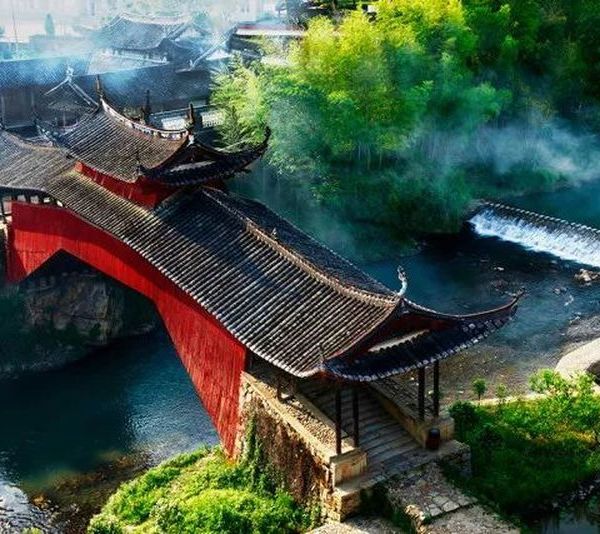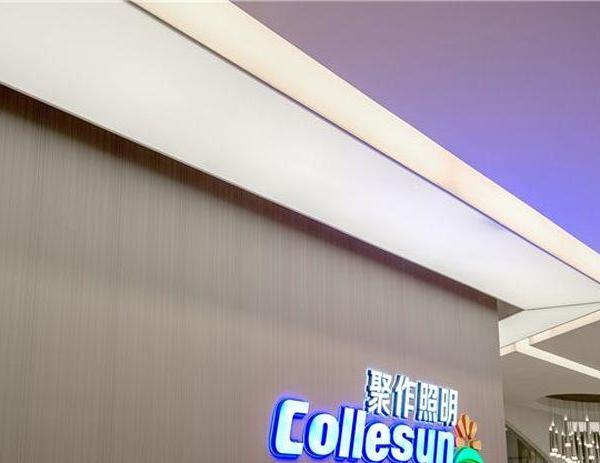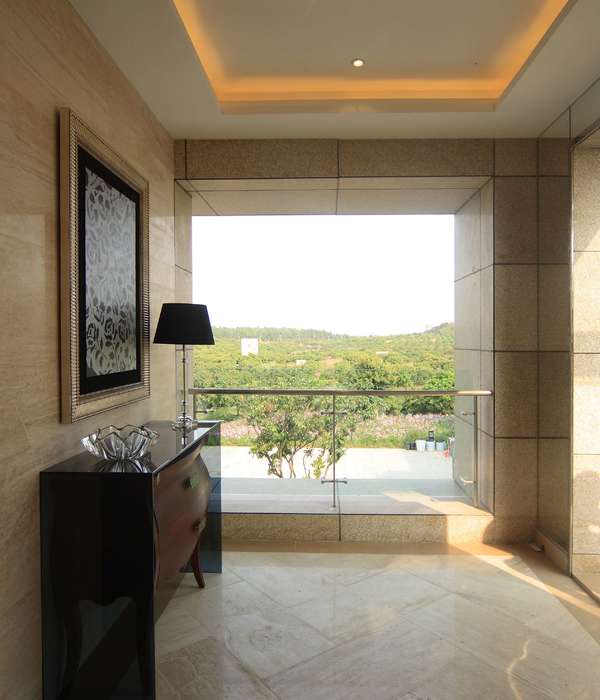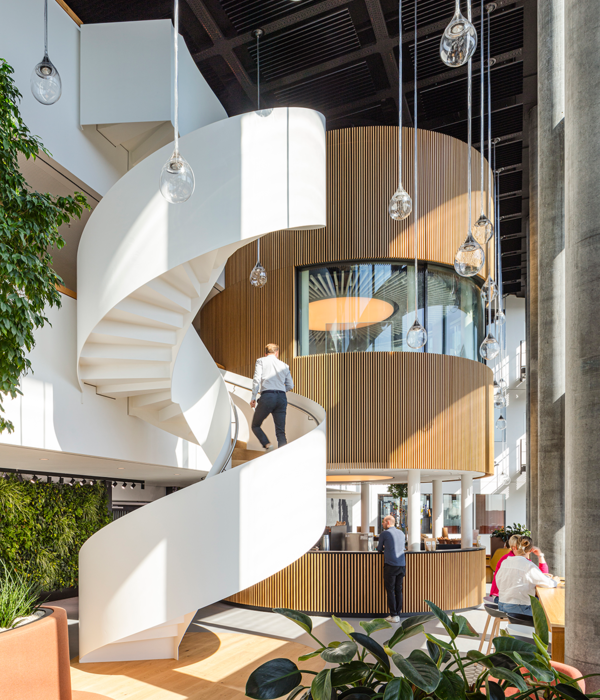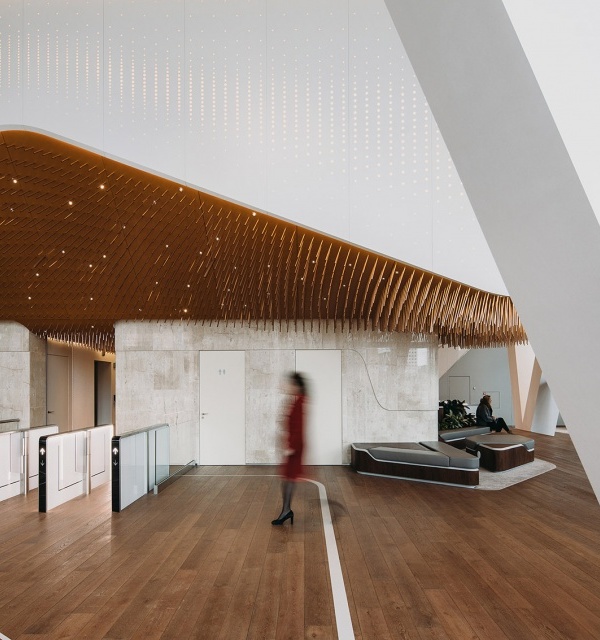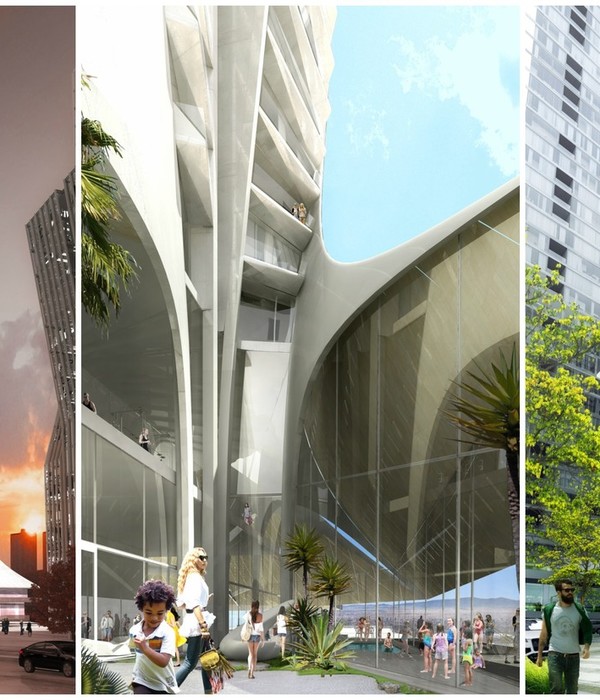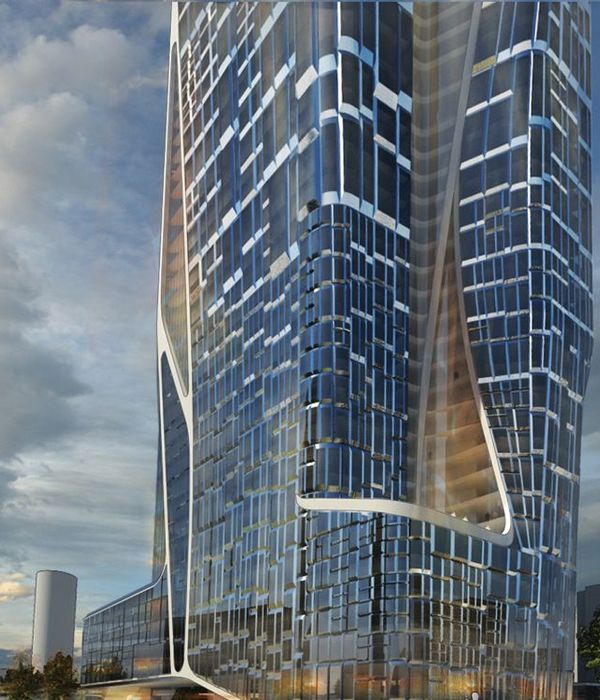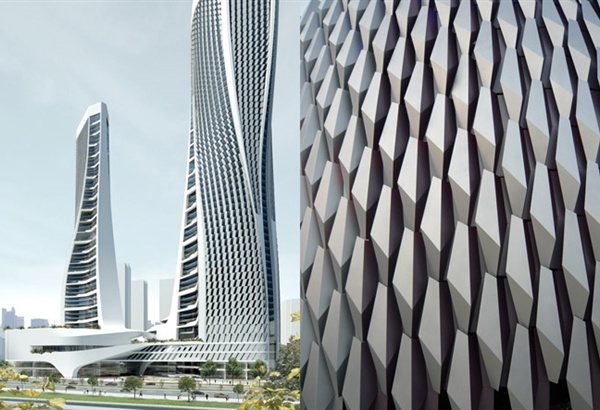新建的在圣保罗Vila Madalena 区的住宅楼由Triptyque Architecture 设计。这座由Triptyque Architecture 设计的项目灵感来自于Vila Madalena区的典型社区建筑风格。一个坐落在Arapairaca街的住宅综合体。为了能让这个8000平方米的体量能和它周围环境做一个自然连贯的对话, 设计团队的主要考量是如何让设计能和周围包括一个老房子的社区,临近的酒吧和饭店在内的文脉相融合。
The new residential building in Vila Madalena district in São Paulo is made by Triptyque Architecture. The particular urban base of Vila Madalena neighborhood in São Paulo defined the project created by Triptyque Architecture: a residential complex built in Arapiraca Street. The integration with its context – a neighborhood of old houses, close to bars and restaurants – was the main objective of Triptyque’s architects, in order to make a natural dialogue between the 8000m2 volume of construction and its relief.
▼与周边地区文脉相融合的公寓楼,the apartment building’s appearance is blended into the surrounding context
▼独特而低调的外立面,the combination of modesty and the unique
为此, 建筑师决定把这个住宅综合体分解成八个随机分配的小街区,每一个小街区都有一个独立的入口, 这些独立入口的位置 保证了这些小街区总能获得最佳视野, 最优化的通风和自然光线。 在第九栋楼中安置了电梯, 通风口和楼梯间,这里集中了所有金属制的悬空步行桥:它们将作为居民们的主要流线和社交区域。
For this, the architects decided to split the complex into eight randomly distributed blocks, each one with an independent access, whose the position guarantees the best view and optimizes the ventilation and the natural luminosity. A ninth block shelters the elevators, the shafts and the stairs, it concentrates the exits of the metallic footbridges: place of circulation and socialization between the inhabitants.
▼悬空的步行桥联系了建筑上层的流线,创造了社交空间,the suspended footbridges host the circulation and socialization between the residents
▼住宅楼上空的金属步行桥,the metallic footbridge
▼穿孔金属向交通空间引入更多的阳光,the perforated panel brings more daylight to the circulation space
设计的结果是一个许多公寓的集合体,每个公寓都为每一户房保留了同等的私密性。在拥有宽敞的阳台和富余的层高的同时, 这些套房可以有包括从两人套房到三居室在内的不同的空间布置。公共区域处在楼上, 其中特别是像走廊这种区域都享有充足阳光和通风。
The result is a configuration of apartments allowing for privacy equal to independent houses. With generous terraces and a wide ceiling-height, the units varies from studio to triplex and can have different layouts. The shared area in the upper floors and particulary the walkways, are bathed in sunlight and ventilated by the wind.
▼外立面较少的窗体保护了公寓的私密性,the configuration of apartments allowing for privacy equal to independent houses
对历史的呼应也体现在建筑的瓷砖上,提醒人们会想起占领此地的第一批移民:葡萄牙人。由艺术家Athos Bulcao创作的蓝白相间的阿苏莱霍斯式瓷砖铺满了所有内部街区的立面。它们光滑而富有反射性, 让立面表现得富有动感的同时也照亮了中央区域的地面。 刻意凸显的石框层又给整体增添了粗野主义的元素。
The historical reference also appears in ceramics, as a mention to the Portuguese, the first immigrants who occupied the region. The blue and white azulejos, a tribute to the artist Athos Bulcão, cover all internal facades. Smooth and reflective, they give life to the facades while illuminating the center of the ground. The apparent layers of the gabions give a brutalist aspect to the whole.
▼建筑群内侧的立面使用了蓝白相间的瓷砖贴面,the internal facade is covered with blue and white azulejos
Vila Madalena 的集体记忆表现在我们对墙体涂装的选择上。墙体上主要展现的喷射混凝土体现了一种粗糙近乎原始的材质和色彩。 这也呼应了这个街区里的老式建筑普遍用的典型表面涂装。
The collective memory of Vila Madalena takes place in the choice of coatings, which the predominance of projected concrete – rough and rustic material, almost primitive, in graphite color – is a reference to the very used coating for the old constructions of the district.
▼靠近城市的立面选择了与周边环境相融合的涂装,the facade facing to the city is integrated with it’s context
建筑内的植被在这个项目中有关键作用。无论是在走道的两边还是在地面区域,高密度的绿色植被创造出建筑之下的城市森林的氛围。 就如房子从丛林中生长出来, 如同一个广场一般对城市开放。
The vegetation plays a central role in this project, whether in the plats attached to the walkways, as in the ground-floor, where the green density creates an atmosphere of urban forest under the building. As if the building spring up from the jungle, opening like a square to the city.
▼周边的植被创造出城市森林的氛围,the green density creates an atmosphere of urban forest under the buildings
在建筑的两个入口,多孔式的空间划分消解了走道和地面间的分隔, 创造出公共和私人区域的模糊分界,同时也因此表达了这个综合体作为一个项目的统一性。
At the building’s both entrances, the porosity fades the limit between the ground and the sidewalk creating a blurred boundary between the public and the private, and thus revealing the generosity of the project as a whole.
▼建筑底部的公共活动空间,the gathering space in the core area
“我们设计的Arapiraca 大楼在融入周围语境的同时,又能作为一个创新的存在引人注目。“Triptyque的合伙人总结。
“We have designed the Arapiraca building integrated to its context, but at the same time, with a striking and innovative presence,” conclude the Triptyque Architecture’s partners.
▼地面和人行桥之间的界限模糊了公共和私人空间的边界,the limit between the ground and the sidewalk creating a blurred boundary between the public and the private
▼公寓内部,interior of the appartments
▼建筑外观
▼建筑外观
▼建筑外观
▼建筑外观
Project name: Arapiraca.
Site: Vila Madalena, São Paulo, Brazil.
Project start: 2010.
End of project: 2016.
Ground-floor area: 1.633 m².
Build area: 8.000 m².
Architecture: Triptyque Architecture.
Team: Carol Bueno, Greg Bousquet, Gui Sibaud, Olivier Raffaelli (partners); Luiz Trindade (general manager); Bianca Coelho e Beatriz Hipólito (projects manager); Felipe Alves (visual comunication); Marcella Verardo, Murillo Fantinatti, Pedro de Mattos, André Mathias, Vinicius Capela (architects).
Photographer: Fernando Guerra
Property developer: Idea!Zarvos.
Landscape: Rodrigo Oliveira.
Structure: Gama Z.
Installation: Tesis.
Air conditioning: Willem Sheepmaker & Assoc.
Light: Estudio Carlos Fortes.
Waterproofing: PROASSP.
Base: Portella Alarcon.
Elevators: Atlas.
Construction: Lock Engenharia.
MORE:
Triptyque Architecture
,更多关于他们:
.
{{item.text_origin}}

